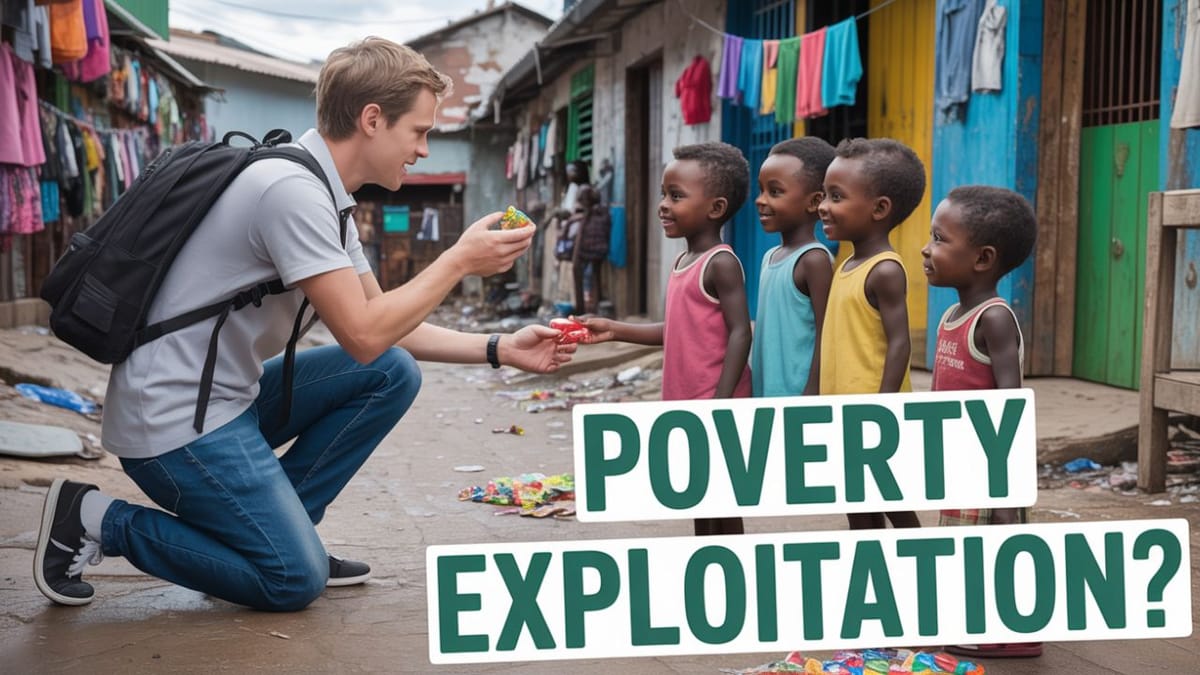Poverty Tourism in Kenya

Introduction
Poverty tourism, often referred to as "slum tourism, pity tours, ghetto tours," is a complex and controversial phenomenon that has emerged in various parts of the world, including Kenya. This practice involves tourists visiting impoverished areas to observe the living conditions of residents. In Kenya, particularly in urban centers like Nairobi, poverty tourism has gained popularity, raising significant ethical, social, and economic questions. This article provides a comprehensive examination of poverty tourism in Kenya, exploring its motivations, impacts, ethical concerns, and best practices for ensuring a more respectful approach.
Understanding Poverty Tourism
Definition and Context
Poverty tourism is characterized by the act of traveling to economically disadvantaged areas, often termed "slums," where tourists seek to witness the realities of life in poverty. In Kenya, this typically involves organized tours through neighborhoods such as Kibera and Mathare, where visitors can observe daily life, interact with residents, and sometimes participate in community activities. An example of such an organization is the Kibera tours, which focus on promoting awareness about the Kibera community.
Motivations for Poverty Tourism
- Curiosity and Awareness: Many tourists are driven by a genuine desire to understand global poverty and the socioeconomic disparities that exist between their own lives and those of the residents in these communities. This curiosity can stem from media portrayals, personal experiences, or educational backgrounds.
- Cultural Exchange: Some travelers seek authentic experiences, believing that engaging with local communities offers deeper insights into different cultures and lifestyles. They often view these interactions as opportunities to learn, share stories, and break down cultural barriers.
- Philanthropy and Social Responsibility: For some tourists, visiting impoverished areas is motivated by a desire to make a positive impact. They may believe that their presence and spending contribute to raising awareness or even directly support local economies through tourism-related activities.
The Impact of Poverty Tourism
Economic Benefits
- Job Creation and Local Economy: Poverty tourism can create jobs for local residents, particularly in roles such as tour guides, artisans, and small business owners. This influx of tourists can stimulate local economies, providing essential income to families who might otherwise struggle to make ends meet.
- Infrastructure Development: Increased tourist traffic can lead to improvements in local infrastructure, such as better roads, sanitation, and public services. In some cases, tourism-focused funding has facilitated the development of community projects, such as schools and health clinics.
Social and Cultural Effects
- Cultural Exchange and Understanding: Interaction between tourists and locals can foster a sense of mutual understanding and respect. Visitors often leave with a more nuanced perspective of the challenges faced by those living in poverty, which can contribute to advocacy and support for social justice initiatives.
- Stigmatization and Objectification: Despite the potential benefits, there is a significant risk that poverty tourism can reinforce negative stereotypes about the communities being visited. Tourists may view residents as mere subjects of curiosity, reducing complex societal issues to simplistic narratives that fail to capture the full reality of their lives.
Ethical Concerns
Exploitation vs. Empowerment
Critics of poverty tourism argue that it often exploits vulnerable populations. Tourists may view residents as attractions rather than recognizing their dignity and humanity. Ethical poverty tourism seeks to empower communities, ensuring that local voices are heard and respected, rather than treating them as passive subjects.
Consent and Representation
Many residents of impoverished areas are not consulted about how their lives are portrayed to outsiders. This raises important questions about consent and the authenticity of the narratives shared with tourists. Ethical best practices demand that local perspectives be prioritized in the tourism narrative, allowing residents to shape their own stories.
Case Studies
Kibera
Kibera is one of the largest slums in Africa, home to an estimated 200,000 to 1 million residents. It attracts significant attention from tourists, many of whom take guided tours that showcase local culture, community initiatives, and daily life.
● Positive Aspects: Some tours focus on community projects, such as education and health services, allowing tourists to contribute to these initiatives financially or through volunteerism. This can foster genuine connections between visitors and residents.
● Negative Aspects: However, other tours can perpetuate a negative approach that reduces residents to mere spectacles. This can lead to feelings of objectification and resentment among locals, who may feel their lives are being commodified for profit.
Mathare
Similar to Kibera, Mathare is another Nairobi slum that offers tours highlighting local initiatives, such as youth programs and women’s cooperatives. These tours often emphasize empowerment and resilience within the community.
● Community Involvement: Some tour operators collaborate closely with local organizations, ensuring that profits are reinvested into community development. This model promotes sustainability and aligns with ethical tourism practices.
● Challenges: Nonetheless, the challenge remains that not all tours operate under these principles. Visitors must be vigilant in choosing ethical operators that prioritize local voices and contributions.
Best Practices for Ethical Poverty Tourism
To address the ethical concerns associated with poverty tourism, several best practices can be adopted:
- Community Involvement: Engage residents in the planning and execution of tours to ensure their needs and perspectives are prioritized. This involvement can help create a sense of ownership and respect.
- Transparency and Accountability: Provide clear information about how tourism revenue supports the community. Tour operators should be transparent about their practices, ensuring that tourists understand the impact of their visits.
- Focus on Empowerment: Encourage tourists to participate in community projects, fostering genuine connections rather than passive observation. This approach can help create a more meaningful exchange and support local initiatives.
- Educating Tourists: Before tours, educate visitors about the cultural context and challenges faced by residents. This preparation can help cultivate empathy and understanding, reducing the likelihood of objectification.
- Feedback Mechanisms: Establish channels for local residents to provide feedback on their experiences with tourists. This can help operators adjust their practices to better serve the community and address any concerns.
Conclusion
Poverty tourism in Kenya presents a complex landscape of opportunities and challenges. While it can provide economic benefits and foster cultural exchange, it also raises significant ethical concerns that must be addressed. By prioritizing local voices, engaging communities, and focusing on empowerment, stakeholders can create a more sustainable and respectful form of tourism. As awareness of these issues grows, it is crucial to consider the dignity and rights of those in the communities being visited, ensuring that tourism contributes positively to their lives rather than detracting from their humanity.




